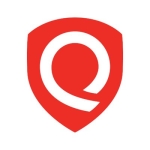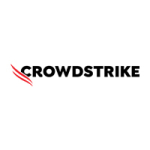I work with the solution for patching over all the cloud vulnerabilities. We have a different monitoring team that monitors all the alerts on the solution. They send us a report, and we work on that report to patch all the vulnerabilities of our cloud environment, such as Azure and AWS.
The solution's main benefit is that it automates all the patching and reporting parts and generates an automated report. The solution automatically notifies you whenever any alert comes into your cloud environment via mail or message.
Sometimes, the solution provides us with false alerts of vulnerabilities that are not present in our cloud environment. The solution should include an auto-remediation feature, which most tools currently provide.
I have been using the solution for three years.
Apart from the occasional false positives in the reports, we haven't had any issues with the solution's performance or stability.
Check Point CloudGuard CNAPP is a scalable solution.
The solution is implemented in multiple locations, and each location has around 300 users.
We contacted the technical support team during the deployment phase, and their support was very good and responsive.
We previously used CrowdStrike. We switched to Check Point CloudGuard CNAPP because CrowdStrike lacked many features. Check Point CloudGuard CNAPP is a more advanced version of CrowdStrike, integrated with AI capabilities. It also provides different automatic reports, such as compliance reports.
Around three to four people were involved in the solution's deployment. Since there are multiple environments in the cloud, it takes an entire day to deploy the tool.
The solution's cloud security posture management scans your cloud environment and cloud-configured policies and gives you a report of all the loopholes in your cloud environment. You can also get compliance reports from the solution, and I am completely satisfied with its effectiveness.
The solution's cloud security posture management identifies risks most critical to the business and segregates them into low, medium, and high categories. The solution's workload protection capabilities provide protection for VMs. The scanning provided by the solution's workload protection capabilities helps us identify problems before they go live.
We can schedule the solution to scan our cloud environment daily for vulnerabilities. The solution takes 20 to 25 minutes to scan the entire cloud environment. Earlier, it used to take an entire day because we had to perform all the manual tasks to find out all the loopholes in our cloud environment.
Before using the solution, we used to spend an entire day finding all the loopholes in our cloud environment. Check Point CloudGuard CNAPP automated most of our tasks by providing automatic reports to our security team. We also use the solution's CDR capabilities.
The visibility we get from the solution's CDR capabilities helps simplify incident investigation time or process. After providing all the loopholes in our cloud environment, the solution provides a step-by-step remediation plan to fix particular vulnerabilities. We extract the report from the tool and work on the patching part.
We perform intrusion detection and threat hunting from the same console. Check Point CloudGuard CNAPP is a SaaS-based solution. All the configurations have gone through the secret key we fetch from the cloud environment and integrate with the solution. From there, it fetches all the configurations for the entire cloud environment.
I would recommend the solution to other users.
Overall, I rate the solution ten out of ten.





















